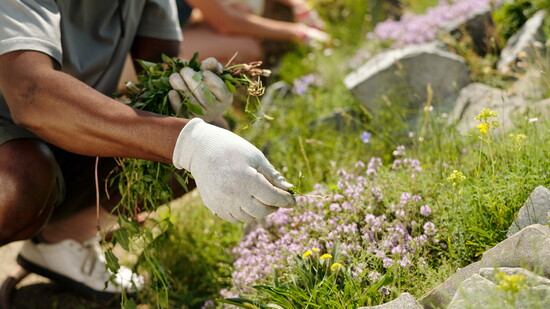It is that time of year again, when we are thinking about our gardens for next year! In Littleton, the climate can be especially challenging to successfully grow your favorite fruits, vegetables, and herbs. The temperatures can be especially difficult, going from extreme highs to lows in very short periods of time, and many plants aren’t resilient to this type of variance. Not to worry though! There are easy tips that will help you start a beautiful garden from scratch or maintain the garden that you’ve already started and love!
It is important to remember that plants thrive off natural sunlight, and in most cases, the more exposure the better. Find a place for your beds that will get as much sunlight as possible, and where they can be protected from being disturbed by wildlife such as rabbits and squirrels.
Raised/above ground beds do especially well, and there are a variety of options available. Homeowners can build wooden raised beds, or pre-made beds such as bags or galvanized metal beds can be purchased, and they tend to be both cost effective and weather resistant.
Perhaps the most important aspect of your gardening adventure is the soil that you use in your beds. Regular Earth dirt will not grow big, beautiful produce because it is lacking significant nutrients. Soil that is intended for vegetable gardens can be purchased at most nurseries and garden centers. When determining how much soil you will need, it is usually best to anticipate filling each bed 2-3’ deep, so that the roots have plenty of growing room.
Once you have the soil in your beds, it is best to make sure it is slightly moist. At this point, the soil needs to be amended, which means adding materials to it (most often organic compost) to make it nutrient rich. Once the compost is mixed in, you are ready to start planting!
When determining what you want to grow, there is a lot to think about. A very common mistake is to grow things you end up not eating/using fast enough, or growing something you thought you would eat, but it ends up going to waste. Make sure you grow foods that you and your family will enjoy a plentiful amount of!
It is also important to understand the USDA Hardiness Zone map, which is a great resource for helping gardeners determine what will grow best in our climate. The Colorado Front Range tends to fall within zones four and five, which indicates a tougher climate and shorter growing season. Crops such as beans, potatoes, peppers, and tomatoes (depending on the species) tend to grow very well in these zones.
A lot of herbs also grow well, are easy to maintain, and most come back year after year. Basil, chives, dill, mint, oregano, parsley, rosemary, sage, and thyme are Littleton-friendly herbs. Basil is a great example of an herb that can be grown easily, and works great as a companion in beds with plants that are susceptible to being destroyed by insects, since it is a natural pesticide.
Melons and berries can be grown quite successfully, following the same guidelines as vegetable garden beds. Fruit trees can be especially tricky in this climate and most aren’t annual producers, so a harvest can only be collected every four to five years usually.
Once you have planted seeds, most beds only require watering every other day, depending on how high the temperature gets. Be careful not to overwater, or your plants will not produce as well, and a lot of times they will eventually die off.
Lastly, it is important to protect your plants from elements such as hail and frost, and there are great options for netting and blankets that can be purchased and easily installed.
Happy Gardening!
Make sure you grow foods that you and your family will enjoy a plentiful amount of!
